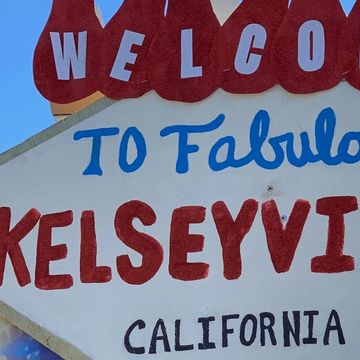In the clear waters off Santa Barbara, Mary Nishimoto has watched through the view screen of a remotely operated vehicle as barnacles, bright anemones, mussels, and scallops create a kaleidoscope of color. Silver mackerel flash through the gently oscillating underwater forest, while baby rockfish, which look like wriggling grains of rice, seek out a safe harbor in which to grow.
The fish aren’t living in a kelp forest or a rocky reef. Their found nursery is a hulking mass of steel the size of a skyscraper: an oil rig that once pumped millions of gallons of fossil fuels out of the seabed. For Nishimoto, a marine biologist at UC Santa Barbara’s Marine Science Institute who has studied this environment since 1995, it’s clear that the giant metal scaffolding supports more than just oil infrastructure. “These platforms are functioning as reefs,” she says.
This article appears in Issue 27 of Alta Journal.
SUBSCRIBE
Twenty-seven platforms—four in state waters and the rest in federal waters—loom on the horizon between Huntington Beach, in Orange County, and Point Arguello, 200 miles up the California coast. Most platforms were installed more than 40 years ago to harness the huge amount of fossil fuels pooling beneath the coastal seafloor. Their lifetimes are ending—only 15 are still functioning—but their second lives are flourishing. A study from 2014 by UCSB and Occidental College scientists found the platforms to be among the most productive ocean areas in the world; in terms of the amount of fish biomass, for instance, they are about 27 times more productive than the natural rocky reefs in California. “It’s a rich marine habitat,” Nishimoto says.
Some species of rockfish produce 10 to over 600 times more larvae on the platforms than in natural reefs, which along the California coast have been damaged by rising seas and stronger storms. The platforms are also important to commercially significant species like the bocaccio rockfish; one study from 2006 showed that rigs were home to a fifth of all juvenile bocaccio.
In 2010, then-governor Arnold Schwarzenegger signed legislation that opened a path to keeping the rigs in place while shutting down their original functions. The state is now considering such options as toppling them over or removing their above-water portions. Similar approaches have worked in the Gulf of Mexico, but rig-to-reef transformation has never been carried out in such deep waters; off California, some rigs extend 1,000 feet down.
Brady Bradshaw, who has free-dived at the rigs and witnessed the colorful plumes of life up close, imagines a different future. A senior oceans campaigner with the nonprofit Center for Biological Diversity, Bradshaw views the rigs as unnatural ecosystems that have not adapted over time to fit into the larger ecosystem formed over millennia along the Pacific coast. Natural reefs, he says, are more resilient, because they evolve to withstand storms and climatic shifts. “Oil rigs are acting more like a stopgap measure that temporarily houses life,” he says, “but they’re more vulnerable to threats like structure collapse, overfishing, and even oil spills.”
Beyond the artifice of housing fish in metal latticework, Bradshaw adds, anything less than full removals lets oil companies off the hook financially, saving them billions of dollars that they will likely reinvest in additional drilling. “Any decision that allows for oil companies to save money is going straight back into more destruction, because that’s their pattern,” he says. “That’s going to lead to more irresponsible destruction of our climate and of the entire global web of life.” He advocates for complete removal of the structures to restore the area to its natural state.
Eradication would be a massive project, requiring explosives, huge cranes, and cargo ships to remove the metal rigs. It would also, says Milton Love, a marine biologist at the Marine Science Institute, spell death for the marine creatures that make the scaffolding home, which he says would be immoral. “If it turned out that there was a platform that had 100 sea otters around it who would be killed if the platform was taken out, people would be hesitant to remove that platform,” he says. Why not the same feeling with fish?
Ultimately, it will be up to state and federal regulators to decide—with public input—what becomes of the rigs. In December, the U.S. Department of the Interior’s Bureau of Safety and Environmental Enforcement recommended complete removal. But the debate also raises another question: When does a human-made structure become part of nature? Nishimoto sees the rigs as a different type of natural state—one that has developed in the ocean over decades. She’s always surprised to see creatures that otherwise wouldn’t necessarily live together—mussels from the intertidal zone, open-water fish from the deeper ocean—on the rigs. “There’s no other habitat out there,” she says, where you’ll find everything from anemones to deep-water corals. “That has always caught my eye.”•
















